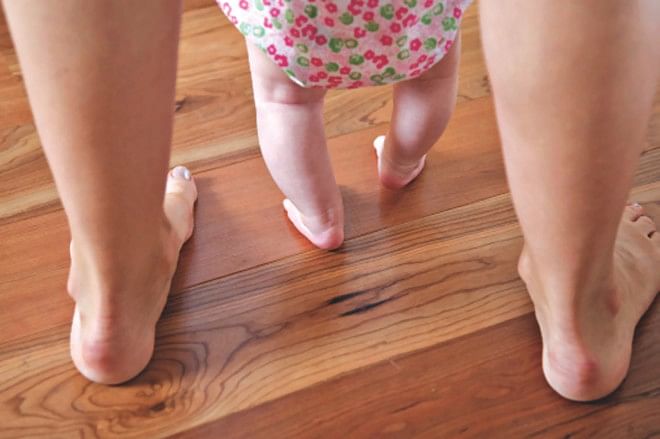Bowlegs in children: What to do?

Recently, a 14 month old pretty boy Zayan (name disguised to protect identity) was brought to me for consultation by his parents. His mother noticed that there was excessive gap between two knees when he stands up- a condition called bowed legs.
According to her, Zayan was born in full term without any complication. He was growing well and there was no functional impairment or had any other abnormality. His physical examinations revealed completely normal except bowing of leg. After proper evaluation for other causes, I explained the mother that this bowing was physiological and does not require any treatment. I assured her that everything will be fine within 8 years of age.
Bowed leg also known medically as Genu varum is normal in infancy and up to two years. If the bowed legs are persistent after 3 years, then pathological causes are considered like Rickets (caused by a lack of vitamin D), trauma or lead poisoning.
When a child with bowed legs stands with his or her feet together, there is a distinct space between the lower legs and knees. This may be a result of either one, or both, of the legs curving outward. Walking often exaggerates this bowed appearance. The alignment may change to knock knee until about eight years, at that time normal adult alignment is achieved.
The most common symptom of bowed legs is an awkward walking pattern. Toddlers with bowed legs usually have normal coordination, and are not delayed in learning how to walk. The amount of bowing can be significant, however, and can be quite alarming to parents and family members.
Bowed legs do not typically cause any pain. During adolescence, however, persistent bowing can lead to discomfort in the hips, knees, and/or ankles because of the abnormal stress that the curved legs have on these joints.
In case of children who are under the age 2, in good health, and have symmetrical bowing (the same amount of bowing in both legs), then it is most likely consider as normal variant and does not need any treatment.
However, if doctor notes that one leg is more severely bowed than the other, or the child is older, doctor may prescribe radiological test like x-ray for further evaluation.
No treatment is recommended for bowlegs unless the condition is extreme. In rare instances, physiologic bow leg in the toddler will not completely resolve and during adolescence, the bowing may cause the child and family to have cosmetic concerns. If the deformity is severe enough, then surgery to correct the remaining bowing may be needed.
Extreme variation of this needs orthopedic consultation but which is nearly needed.
The writer is the Professor of Paediatrics, working at Community Based Medical College (CBMC), Mymensingh.
E-mail: [email protected]

 For all latest news, follow The Daily Star's Google News channel.
For all latest news, follow The Daily Star's Google News channel. 



Comments